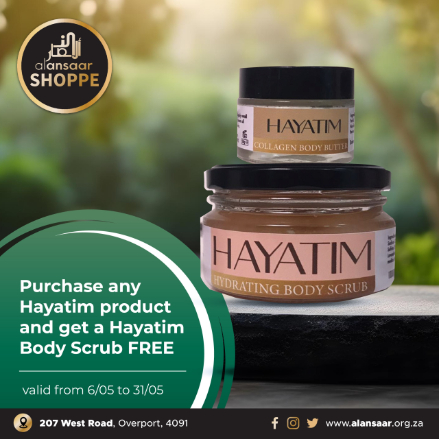An evaluation report done by the Independent Evaluation Office (IEO), which reviews the investments made by the BRICS bloc’s New Development Bank (NDB), has brought to the public’s attention that the multi-billion-rand projects to develop the country’s renewable energy sector and reduce greenhouse gas emissions has achieved success.
In a recently released report on the NDB-financed Greenhouse Gas Emissions Reduction and Energy Sector Development Project in the Republic of South Africa, the first project evaluation done by the IEO in South Africa, it stated that this project involved a $300 million loan from the NDB to the Development Bank of Southern Africa. “The project mobilised co-financing of approximately $2.2 billion, supporting 15 renewable energy sub-projects across four provinces of South Africa,” wrote Ashwani Muthoo, IEO director-general in the preface to the report. Overall, the evaluation found that the project, implemented in the North West, Northern Cape, Western Cape, and Mpumalanga provinces, “achieved its objectives and had a positive impact,” he said.
When we refer to renewable energy, we are talking about creating energy that is sustainable such as solar, wind or hydraulic (water). South Africa is abundant in all three, but the first two in particular. A $300 million loan from the NDB to the Development Bank of Southern Africa for renewable energy projects was going to be a success, due to the need to develop such projects. The need for renewable energy is that it is cleaner and more lasting than fossil fuels. Fossil fuels such as coal, oil and gas release carbon dioxide when they are burned. This contributes to climate change. The renewable energy sub projects are being implement in the provinces that receive the most sun and wind.
The overall economic growth in these provinces will rise.
Muthoo further noted that the NDB’s investment “contributed to the national strategy of expanding power generation through renewable energies. It also brought additionality in terms of crowding in private sector financing and extending access to long-term funds for renewable energy activities in South Africa.” Most importantly, Muthoo said, “the project benefited from the Renewable Energy IPPP’s mandatory requirement for socio-economic inclusion and black economic empowerment, even though such aspects were not explicitly considered as part of the original project design”. This initiative ran from March 2019 to January 2024, including an extension to the closing date of 22 months. In a second review report on the evaluation, the IEO stated that NDB invested R1.15bn into in four sub-projects in the Northern Cape Province via the Industrial Development Corporation (IDC) with a total cost of R27.8bn.
The NDB could encourage the South African financial sector to lead the country out of the load shedding crisis to a more permanent foundation. A foundation that is secured in terms of sustainable energy. Of course, this road to sustainable energy would not have been possible without the money brought in by the private sector. Despite what the critics will have you believe. The growth of the South African energy market could also lead the country to export this form of energy abroad to those nations that don’t have it. Whether over land or the sea or even by air. In the last 22 months the IEO was able to do an evaluation of South Africa’s energy growth and its impact on the economy. This includes job creation and income regeneration. This is what South Africa needs in terms of financial and industrial growth.
As the African continent’s second largest economy South Africa is a major hub to invest in. It is Africa’s gateway.
The economy of this nation was built on natural resource extraction. South Africa (SA) is well known for producing diamonds & gold. These resources mark a great share of the country’s overall GDP. In addition to gold and diamond, South Africa has 72% of chrome, 27% of Vanadium, 88% of platinum-group metals & 80% of global manganese reserves. In addition to this, it has significant deposits of base metals like nickel, copper, iron, coal, and natural gas. All these ensure that the country is an incredible place to invest in—because of the flow of money. SA is only exceeded by Nigeria in Africa—which has 3X the population size of South Africa. Furthermore, in many aspects, it ranks first. The World Bank labels it as an “upper middle-income country.”
In addition, out of the over 400 companies in Africa earning more than $1bn annually, SA owns half. However, South Africa is highly divided. It has parts where there is extreme poverty and others where there is extreme wealth. This division makes it an interesting economy with incredible possibilities in several segments.
The South African economy is alive with opportunity. What matters is diversifying the economy in all sectors. This is done through utilizing the resources available such as the raw materials. Education is the key depending on how it is implemented. Private enterprise has its role in attracting investors. At the heart of all this is the Fourth Industrial Revolution (4IR) and what can be learned from putting into action its technologies and sciences. These are robotics, artificial intelligence (AI) and virtual reality (VR). Renewable energy also goes hand in hand with the 4IR so South Africa has immense opportunity in that regard. The key to all this will be to implement the African Continental Free Trade Agreement (AfCFTA) which promotes free trade between African nations and therefore between South Africa and its neighbours.
This is done without tariffs (taxes on imports). The main driving force that can coordinate South Africa’s efforts to tackle the ever-encompassing poverty and unemployment plaguing the country is the government. The government needs to collaborate with the private sector to increase the size of the economy so that South Africans can benefit. It will be a difficult road ahead but it will get smoother with time if the right policies are implemented.
Article written by:
Yacoob Cassim
Journalist at Radio Al Ansaar






